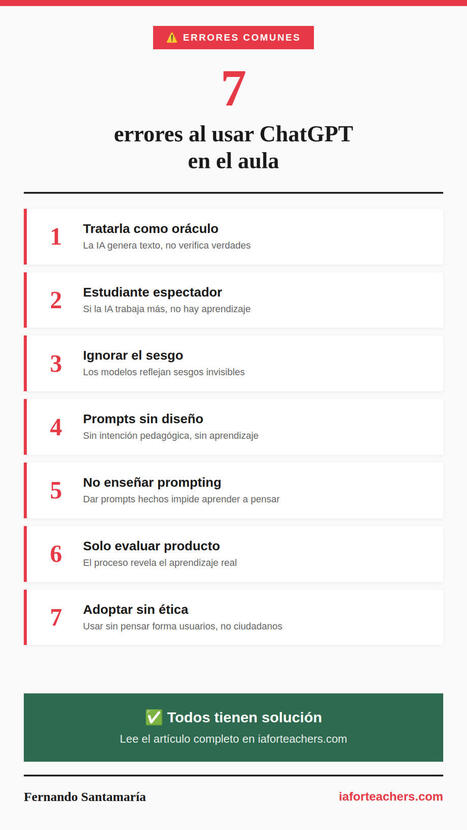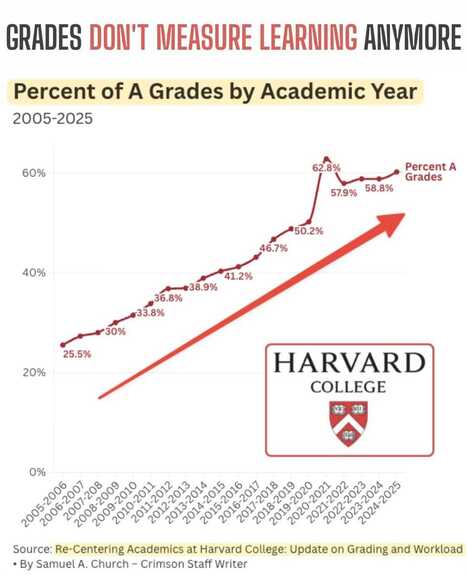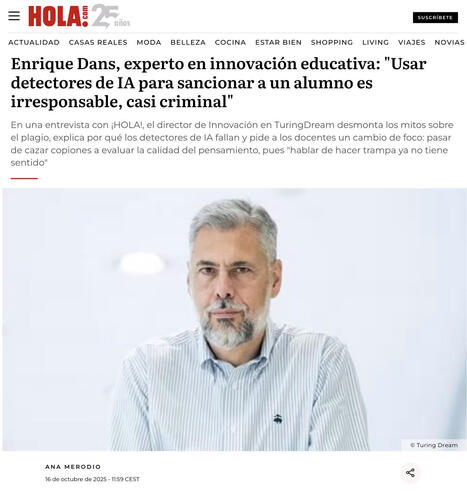La adopción de ChatGPT y otros modelos de lenguaje en contextos educativos ha sido vertiginosa. Según datos de diversas encuestas institucionales, más del 70% de los estudiantes universitarios ya han utilizado herramientas de IA generativa para tareas académicas, y un número creciente de docentes explora su integración en el aula. Sin embargo, esta adopción acelerada ha generado un panorama desigual: mientras algunos educadores logran resultados transformadores, otros abandonan frustrados después de experiencias decepcionantes.
La diferencia raramente está en la herramienta. Está en cómo se usa.
Después de analizar cientos de casos de implementación, investigaciones empíricas recientes y la experiencia acumulada en formación docente, hemos identificado siete errores recurrentes que sabotean el potencial educativo de la IA generativa. No son errores técnicos: son errores pedagógicos. Y todos tienen solución.
No comment yet.
Sign up to comment



 Your new post is loading...
Your new post is loading...


![[Poll] In a dramatic shift, Americans no longer see 4-year college degrees as worth the cost | Edumorfosis.it | Scoop.it](https://img.scoop.it/36YwdfjYNVE7kfUpWCIS2jl72eJkfbmt4t8yenImKBVvK0kTmF0xjctABnaLJIm9)



![[DOCS] NCDPI Generative AI Implementation Recommendations and Considerations for PK-13 Public Schools | Edumorfosis.it | Scoop.it](https://img.scoop.it/J7QOhJu_1by0w3CFkECcDTl72eJkfbmt4t8yenImKBVvK0kTmF0xjctABnaLJIm9)
























